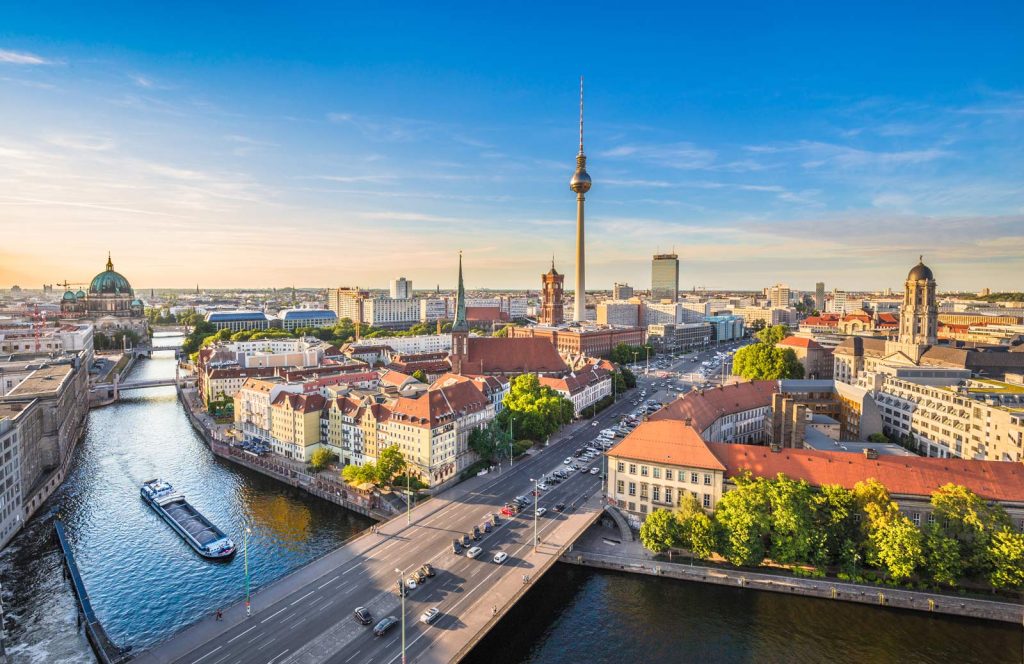From modern cities to ancient charming towns, Germany is full of history, astonishing architecture, and enthralling events. Travelers must take on the envious task of figuring out where to go and it won’t be easy. So while the popular cities of Berlin, Hamburg, and Munich command your attention, travelers who wander further afield will be handsomely rewarded.
The most beautiful German cities reveal their amazing past while showing travelers what it means to be German in the modern-day. You’ll find Renaissance and Baroque buildings from eras past now home to chic restaurants and trendy cafes.
Favourite Cities in Germany
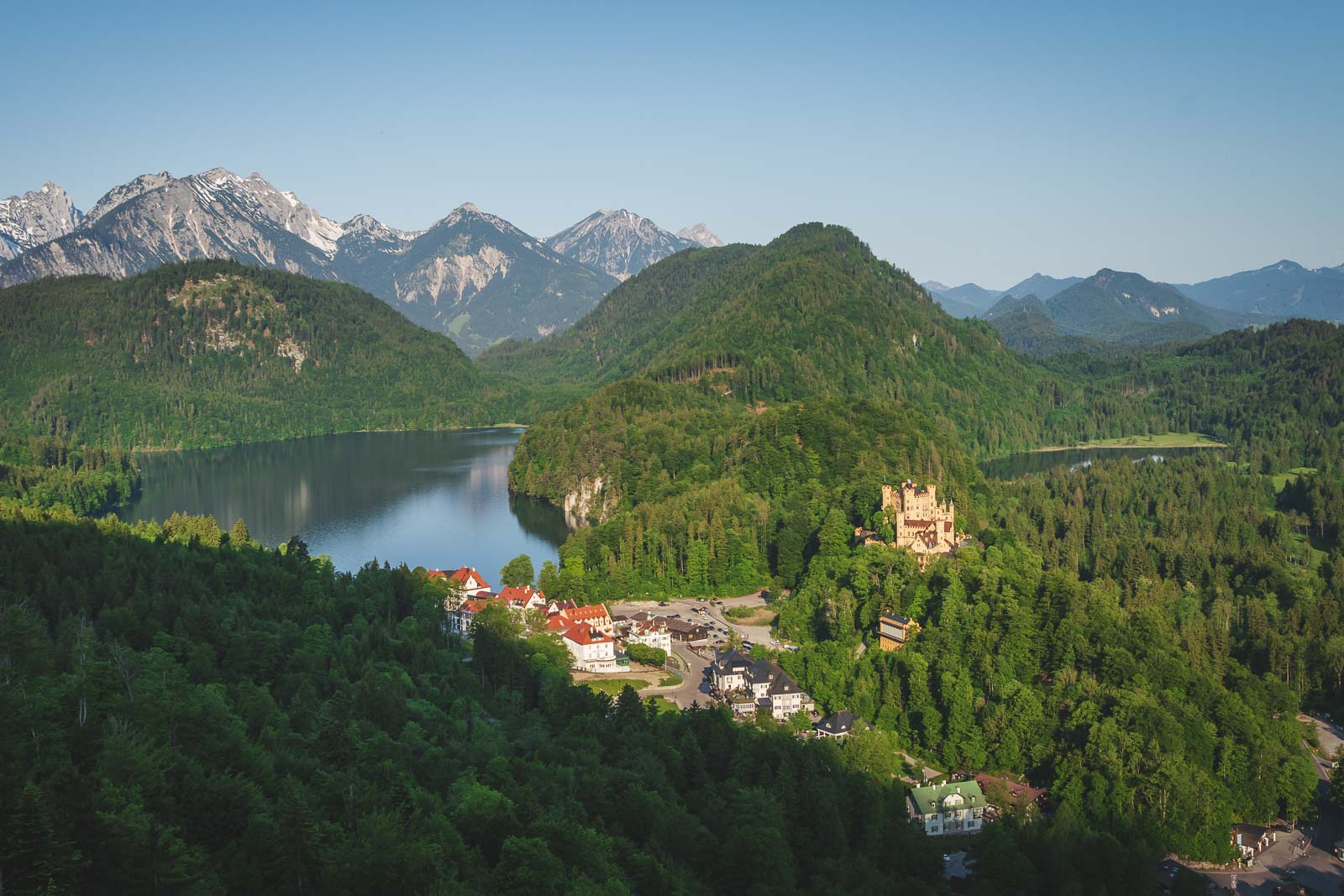
We have been lucky enough to visit most of these cities and have found that each of them has its own charm. I would say the best way to explore a lot of cities in Germany at one time is to road trip. Rent yourself a car and use any of these cities as a base to explore the surrounding regions. you will not be disappointed. To see the best of the past and present, read on for our guide to the top cities in Germany.
1. Berlin
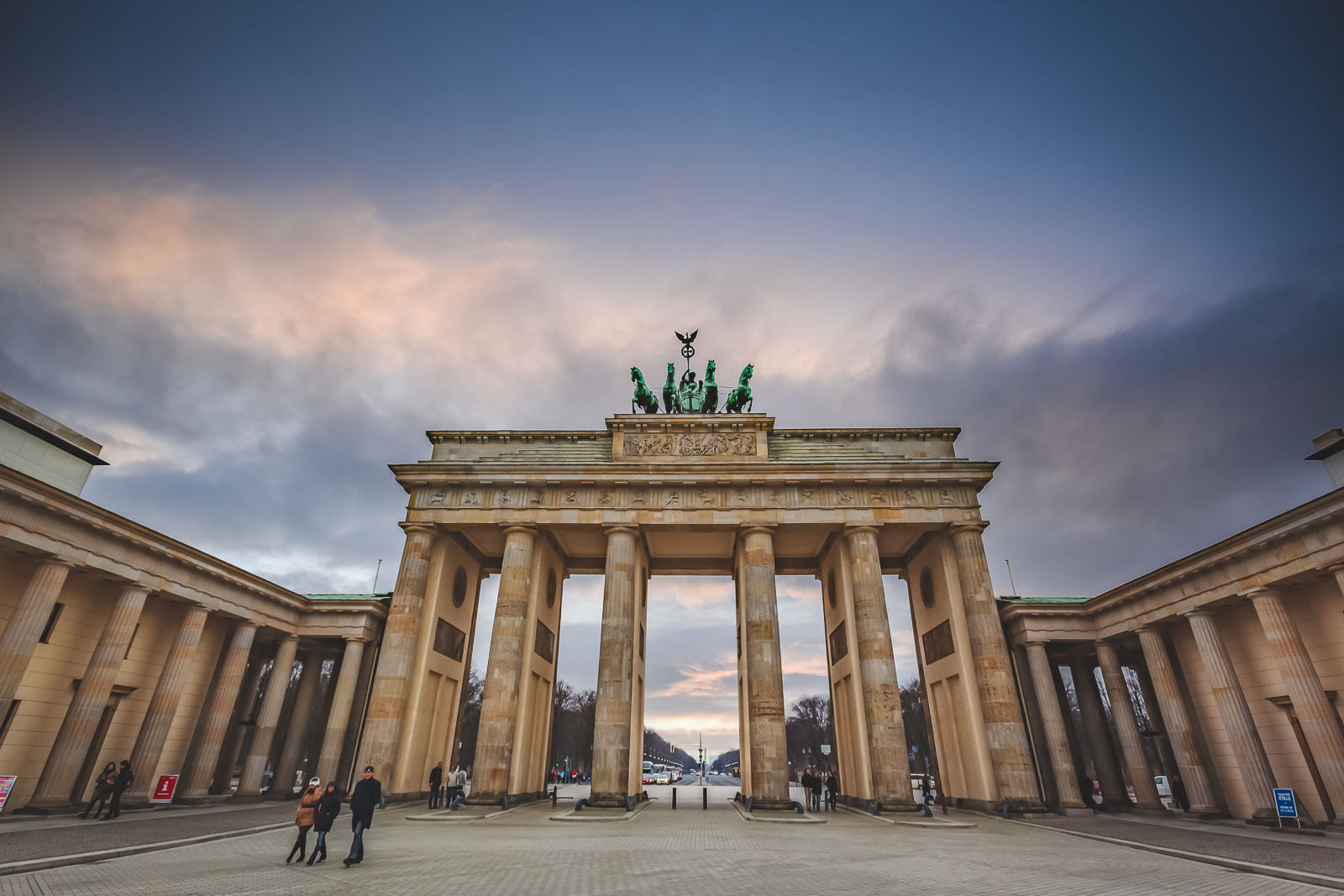
Germany’s capital city combines layers of the nation’s rich history with all aspects of a modern metropolis. Berlin, Germany’s largest city, is teeming with exceptional architecture. Within those hallowed structures, you’ll find remnants of Germany’s story, including the Reichstag, the Brandenburg Gate, and the Berlin Wall.
Berlin has undergone many eras, from being the center point for the Kingdom of Prussia, the Third Reich, and now, the forefront of progressivism. It all mixes to make Berlin one of the most beautiful cities in Germany.
Today, travelers fall in love with the nation’s largest city because of its edgy vibe. Berlin is trendy, with a thriving live music scene where the nights flow into the early hours. Read more: The Best Places to Visit in Berlin, Germany
2. Munich
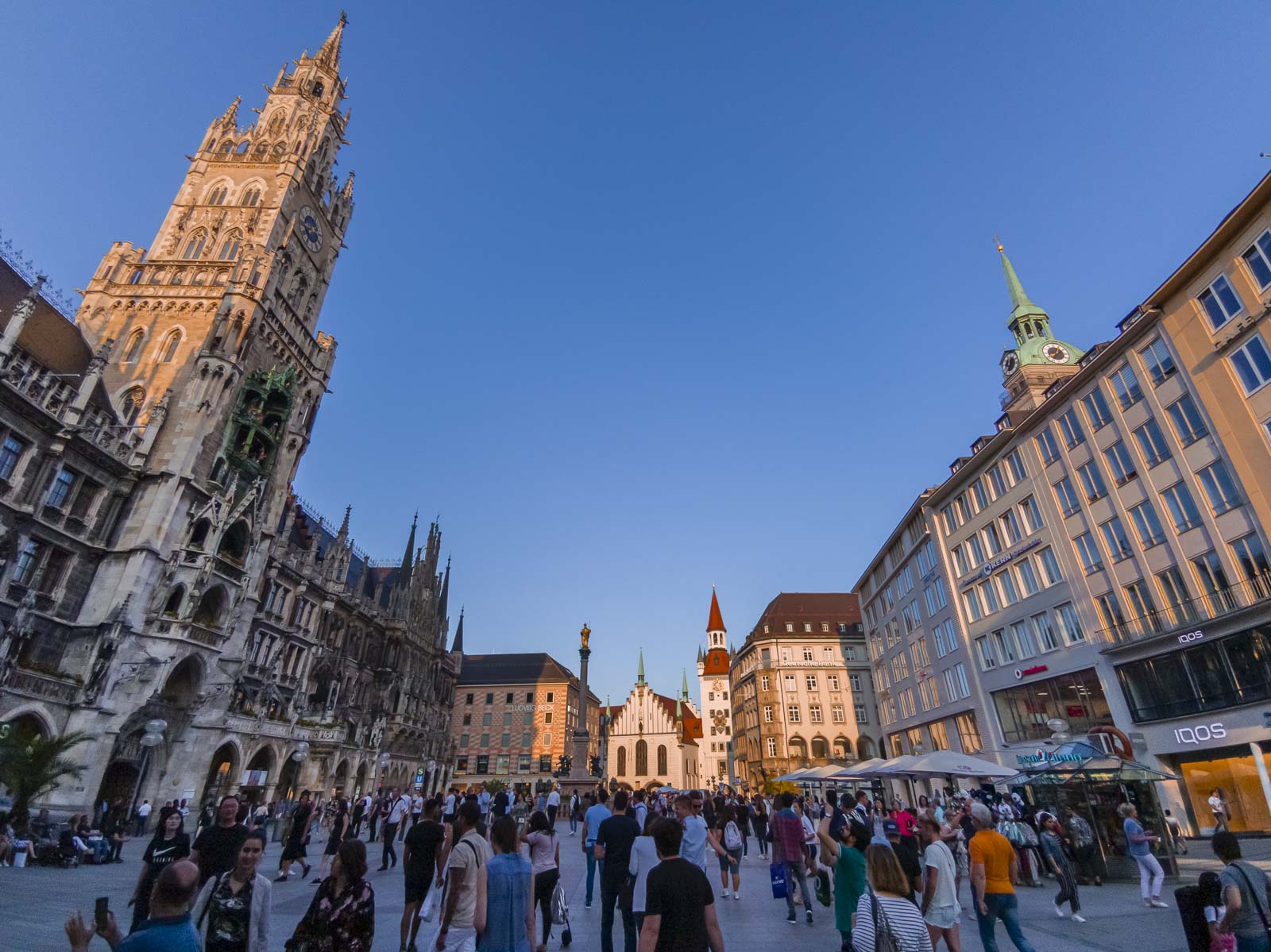
With a population just shy of 1.5 million, Munich has grown enormously since it was established by Benedictine Monks. Now the third-largest city and home to the famous Oktoberfest, Munich is a historic Bavarian city that’s now one of the most diverse in the country.
Dating back to the 1100s, visitors will quickly understand how it garnered the nickname “the village of the world”. Its wide range of museums and galleries showcase German and international culture. Surrounded by beautiful forests, visitors will also love the Nymphenburg Palace and the Blutenburg Castle. While Munich’s landmark cathedral, Frauenkirche is a historic piece of architecture painstakingly rebuilt after it was destroyed in WWII. Discover More of Munich: Best Things to do in Munich, Germany
3. Hamburg

One of the largest cities in Germany, Hamburg, is steeped in history. Its beguiling skyline is without skyscrapers, with ornate church spires standing clear above it all. But perhaps the most memorable aspect of Hamburg is the canals, despite being a ways inland from the North Sea.
With more waterways than Venice, you’ll discover a city with more bridges than anywhere on earth. They all connect and guide you to Hamburg’s historic port. Like the canals, life and culture in the north German city also revolve around the port and a revitalized HafenCity, the riverfront district. Read more: Top 16 Fun Facts About Germany That You Probably Didn’t Know
Beyond the water, you’ll find buildings that showcase Hamburg’s stature as one of the oldest and best cities in Germany. Discover Roman and Neoclassical architecture, wander around the Binnenalster (Hamburg’s sprawling central lake) before exploring the renowned Sunday Fish Market.
4. Cologne
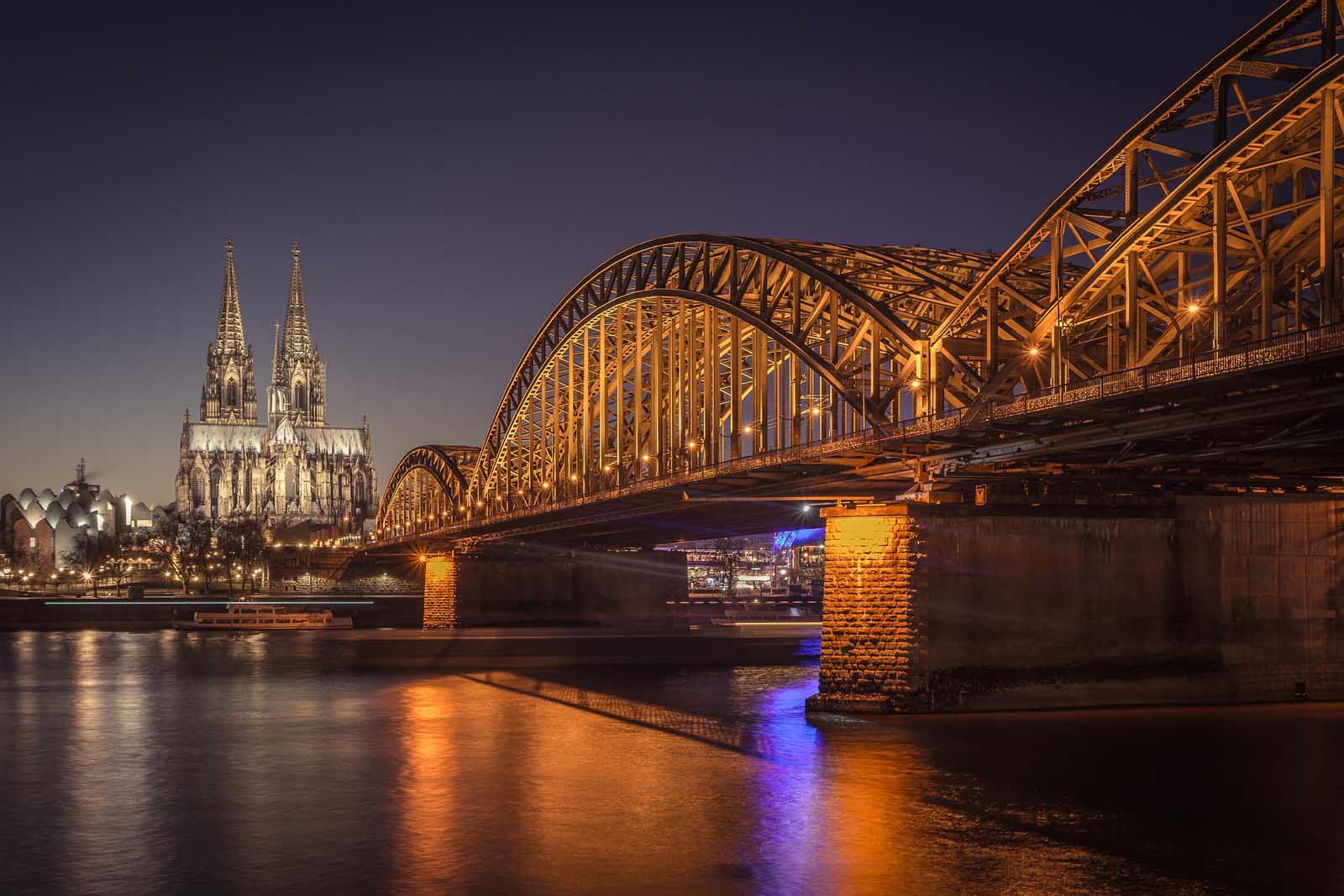
However you first see it, prepare to pick your jaw up off the floor when the Cologne Cathedral comes into view. Soaring to a height of 515 feet, the towering spires pierce the clouds above, helping Cologne lay claim to being one of the most beautiful German cities.
In the six centuries that it took to build the cathedral, Cologne developed a unique culture. Along the North Rhine, the city’s Old Town is lathered in fascinating tales of yore. Once a Roman outpost, you’ll find ruins and reminders of those ancient times.
But as you walk by old Roman and Gothic structures, Cologne can’t help but showcase her modern culture. A vibrant and bustling city, Cologne has one of the best nightlife scenes in Germany.
5. Frankfurt
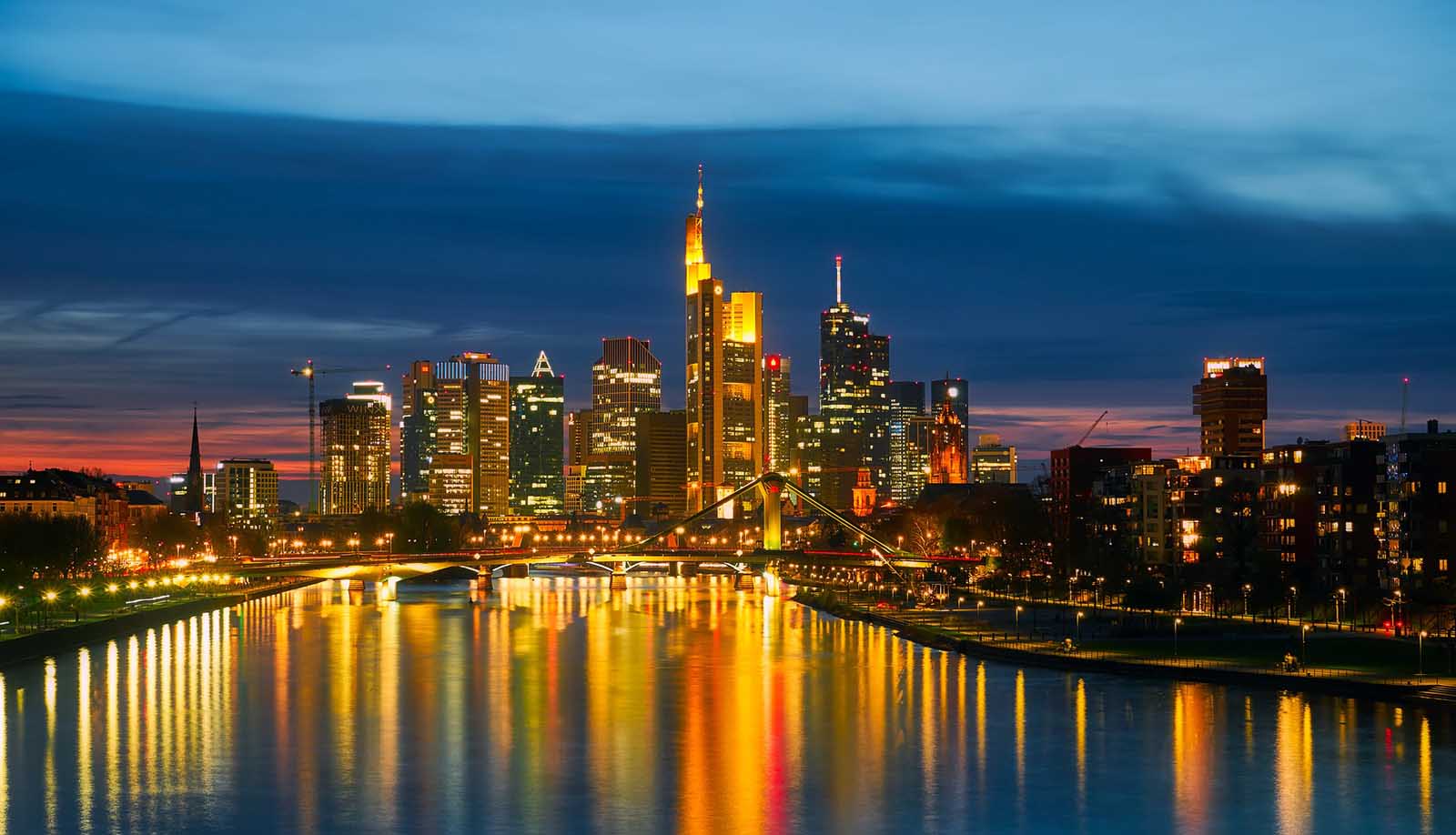
With an airport as busy as any in the world, Frankfurt has long been a central part of Europe. A worldly hub, you’ll find an abundance of international students, making use of Frankfurt’s many connections as one of the largest German cities.
But it isn’t just in modern business that Frankfurt is held in high standing. For centuries, it has been at the center of trade and a home for the monarchy. Today, visitors can explore the many marvels, including St. Bartholomew’s Cathedral and the Frankfurt Museum Embankment. The latter is located on the riverfront and features over a dozen fascinating museums. None more popular than Stadel Museum. Later, head to the city’s colorful Old Town, home to Alte Brucke, a historic stone bridge.
6. Stuttgart
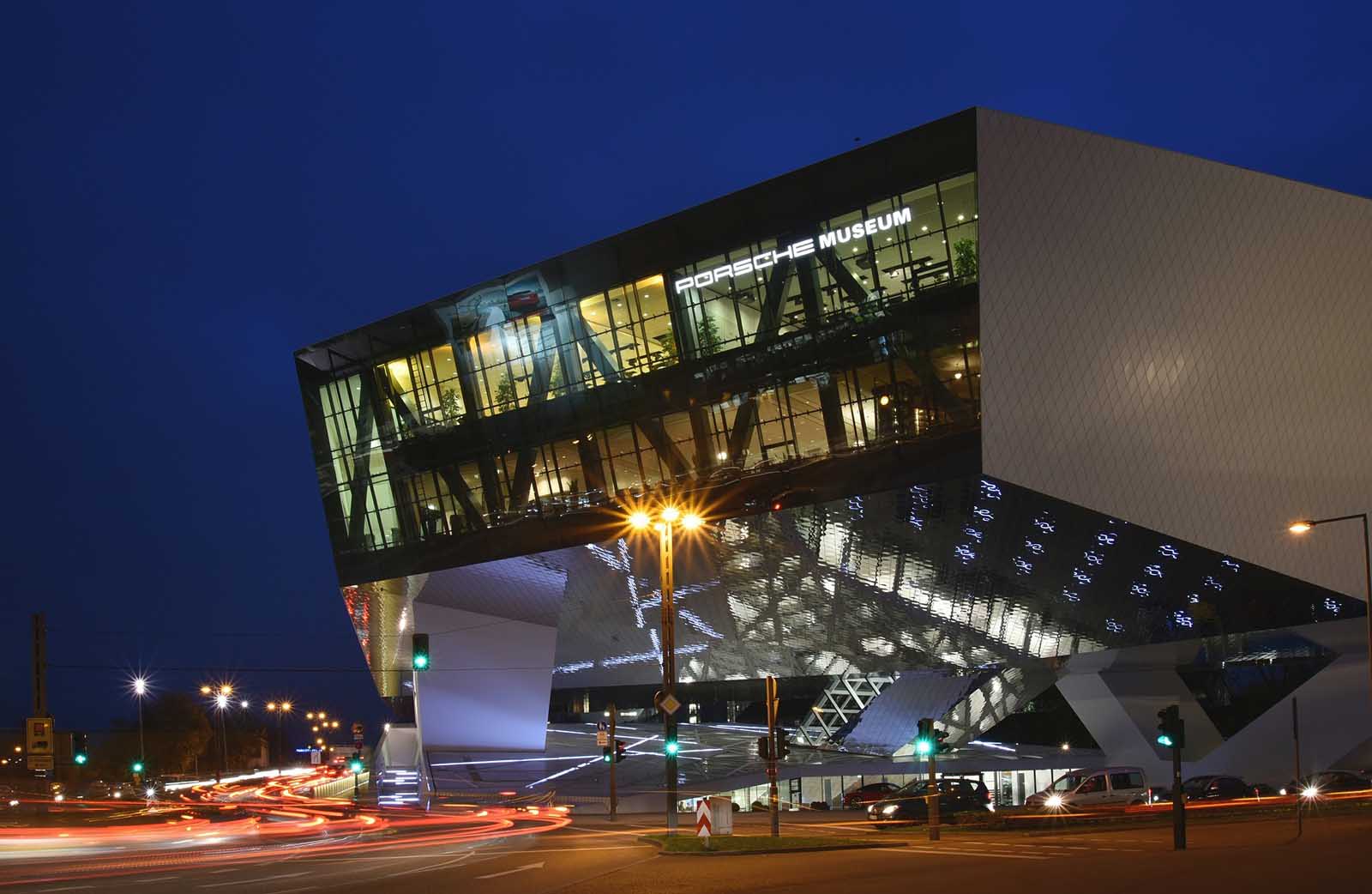
In the Baden-Württemberg region, Stuttgart is enveloped by enchanting hills. There’s a fresh air that floats down from the Black Forest and vineyards to the city, invigorating its ancient streets.
It’s here that visitors will mix historic structures with modern brilliance. From Stuttgart, you’ll have the opportunity to visit the Mercedes-Benz and Porsche museums along the Neckar River. While memorable, you’ll soon be admiring the city’s many castles and the Ludwigsburg Residential Palace in the historic district.
Later, head towards the modern downtown, where you’ll find the pedestrian thoroughfare of Königstrasse, King’s Street. Jump between restaurants and boutique stores, before sampling Stuttgart’s thriving nightlife scene.
Charming German Cities
From the larger cities to the most alluring. Here are some of the smaller but equally beautiful cities in Germany.
7. Schwerin
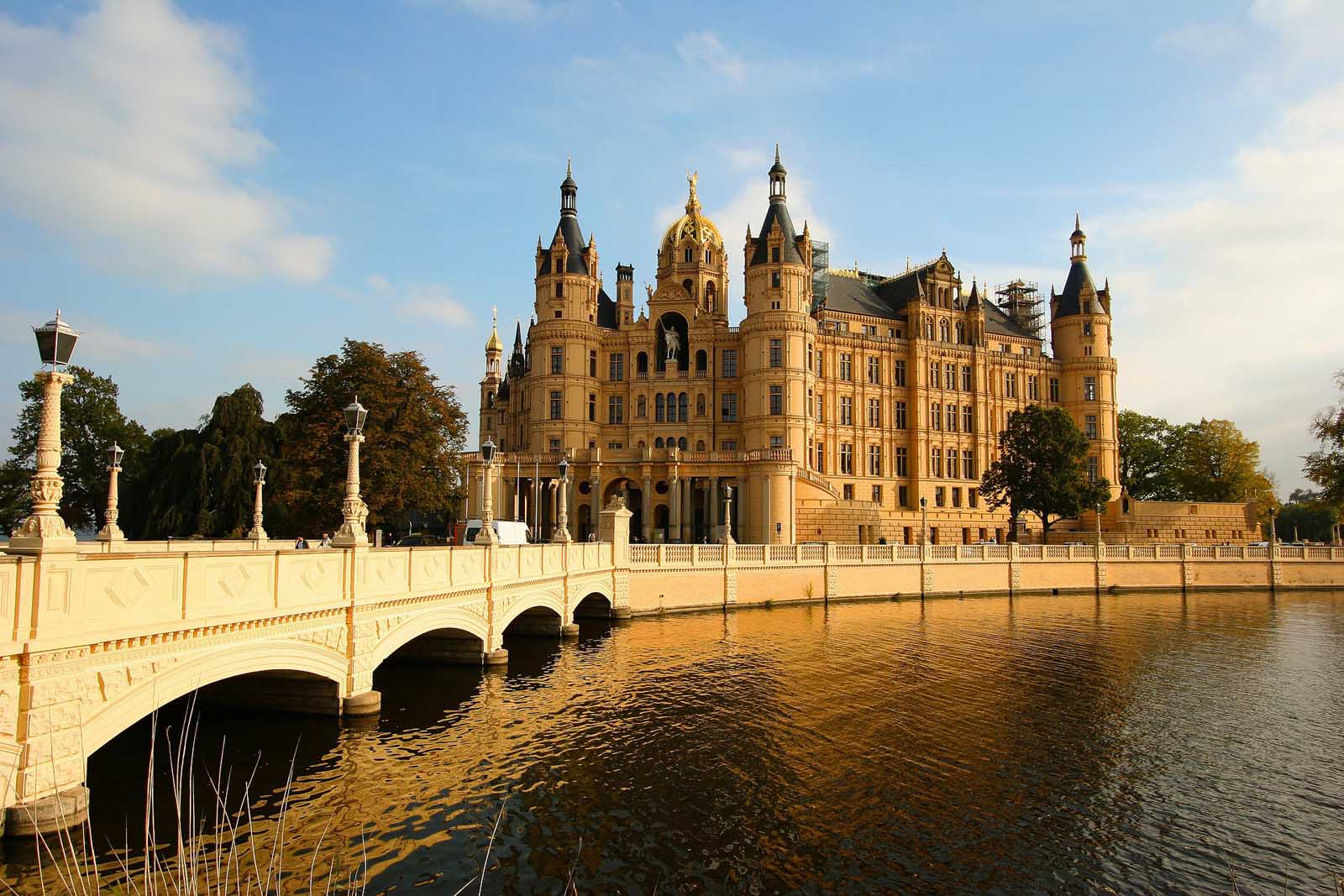
Tucked away in northeast Germany, Scherwin belongs alongside the major cities, such as Berlin and Cologne. Schwerin is known as the Land Of Lakes, a place as beautiful as it is fun.
Beyond the water, you find a charming town with exceptionally preserved architecture, hailing as far back as the 11th century. A perfect example of this is the Schwerin Castle, now home to the state’s parliament. Surrounding the castle are manicured gardens, laden with cute ponds and room to picnic. Afterward, catch a show at the 19th century Mecklenburg Theater, or get out on the kayak at Lake Schwerin.
8. Nuremberg
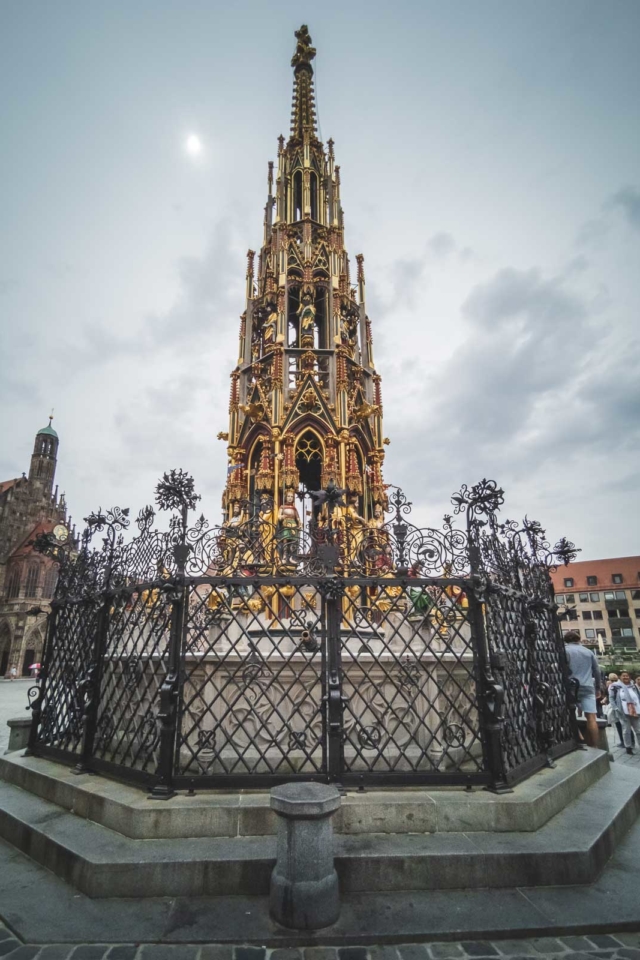
The cobblestone streets of Nuremberg will guide you by colorful pastel-hued buildings as you learn all about the city’s past. Renowned for its delectable gingerbread, made here since the 14th century, Nuremberg is perhaps now better known as the location of the Nuremberg Trials. Something you can learn all about at the Memorium Nuremberg Trials.
But as the capital of Franconia, Nuremberg has a storied past that dates all the way back to Roman times. It was then the city first flourished. Medieval walls were built, and a fortress was developed. The Old Town promises to impress, with such highlights as the Imperial Castle and the old market square. Read More About Nuremberg: Fantastic Things to do in Nuremberg Germany
9. Dusseldorf
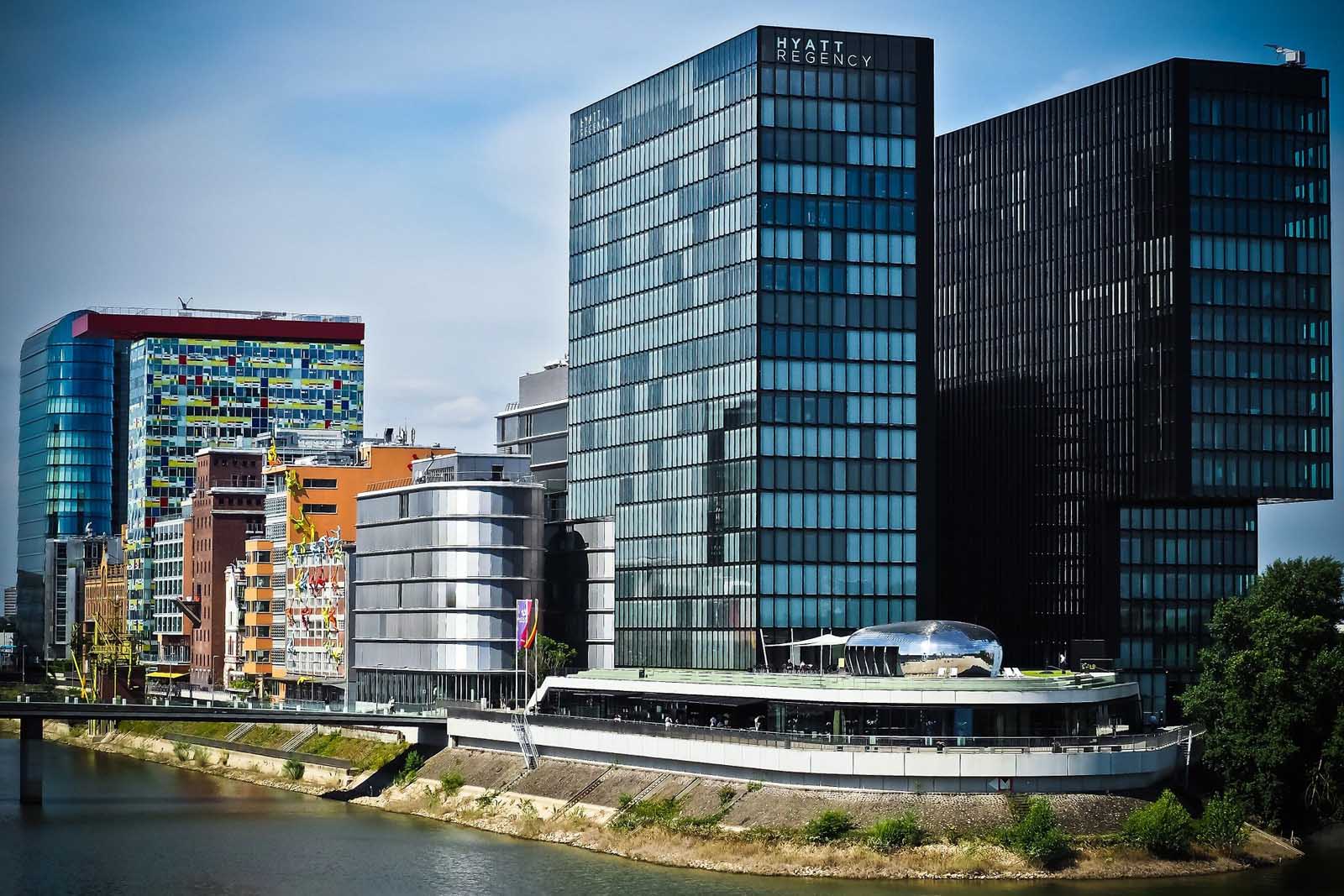
Many cities in Germany showcase their eye-catching history, a term that doesn’t come to mind when thinking about Dusseldorf. But that doesn’t mean you shouldn’t add the city to your itinerary.
Dusseldorf is a cosmopolitan city, that is much more than its business roots suggest. The city is the fashion capital of Germany, home to a captivating art scene and a record-breaking place to take a bar crawl. In Dusseldorf Alstadt, the Old Town, you’ll find well over 300 bars and clubs in just a few blocks. A fact that has given the district the nickname, “the longest bar in the world”.
10. Freiburg
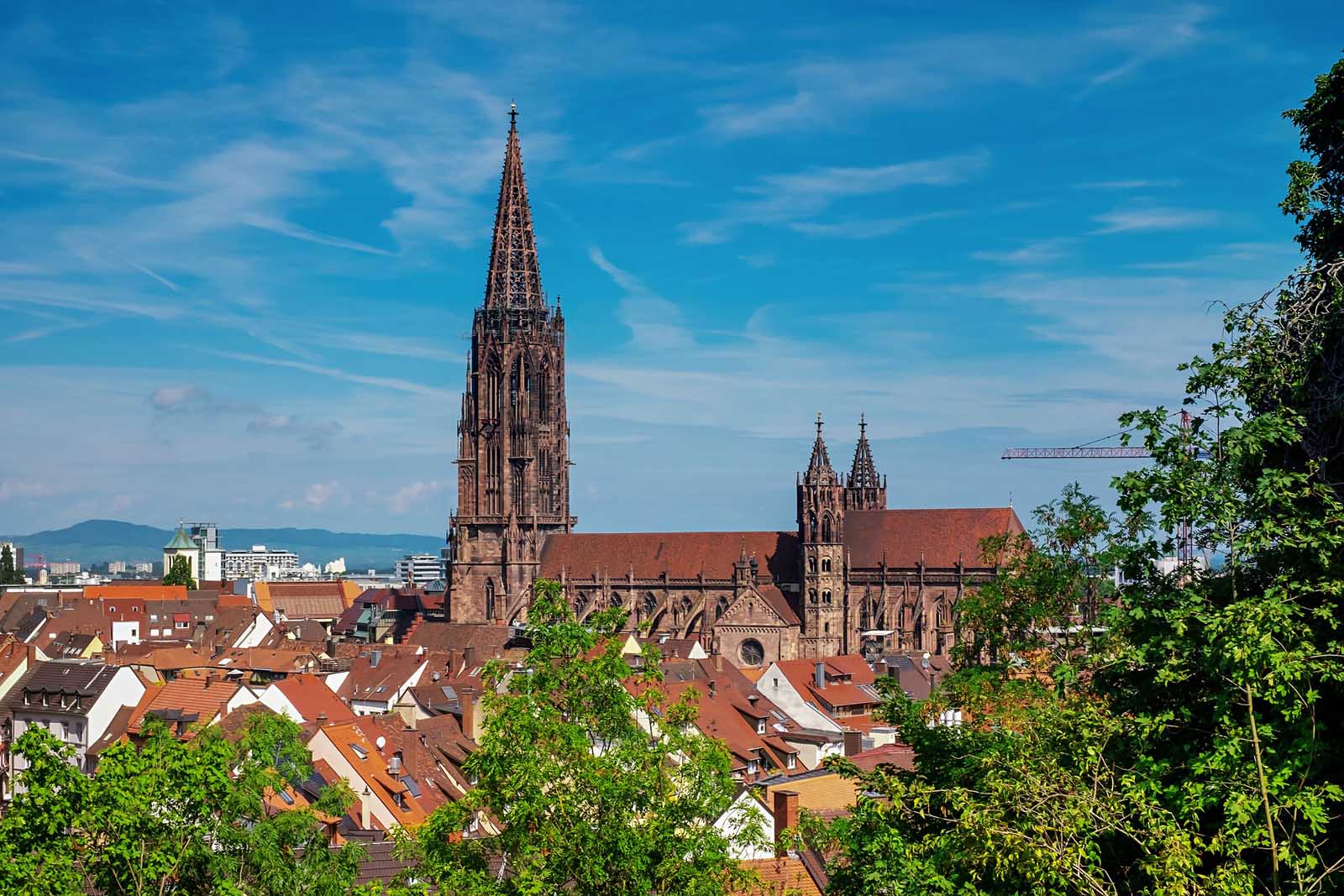
If it’s amazing weather and a lovely community that you seek, then immediately head to the city of Freiburg. Known for its abundance of sunny days, Freiburg is one of the most beautiful German cities.
Visitors should begin at the central Freiburg Munster. The cathedral’s captivating tower stands almost 400 feet tall and its surrounding square is the most spacious in Freiburg. It’s here you’ll find a vibrant market that makes way for the rich history and ancient structures as you head further out.
Within the old streets, you’ll find a packed events calendar, chic cafes, and an authentic dining scene showcasing the best of German cuisine.
11. Leipzig
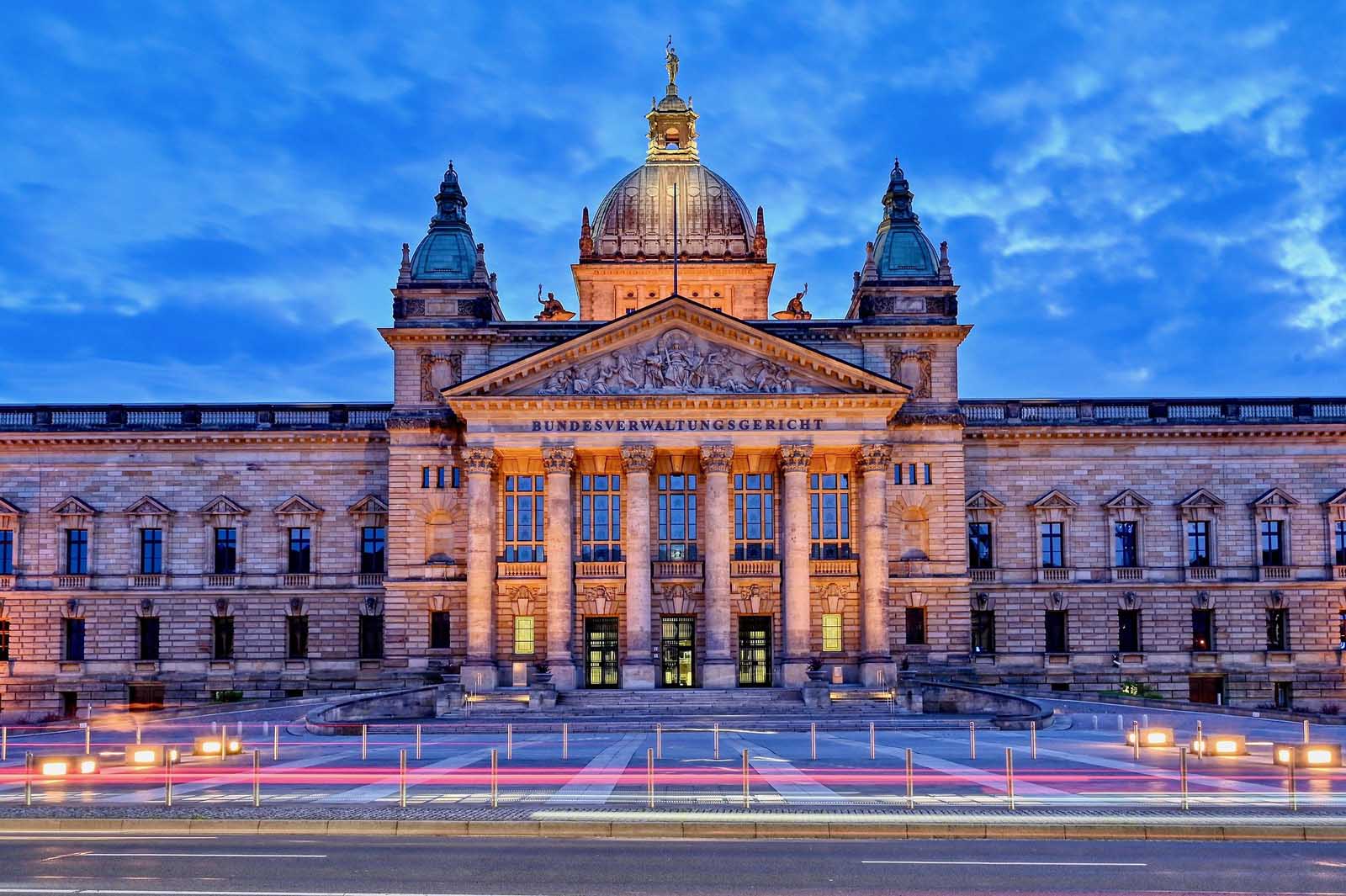
Of all the smaller cities that may one day rival Berlin, Leipzig takes the cake. A bohemian town with an exciting yet unpretentious art scene, the west German city will quickly win over your heart.
You’ll find no shortage of things to do here, with a wide slate of museums owing to Leipzig’s famous past. It was here that Napoleon Bonaparte was defeated. An event you can explore further at the Monument to the Battle of the Nations. While the local art scene can be admired in the many independent galleries, the exceptional Museum of Fine Arts is a must-visit.
12. Wurzburg
Home to fortresses and a UNESCO World Heritage Site, Wurzburg is one of the most historic cities in Germany. Once home to prominent prince-bishops who lived in the Wurzburg Residence, the city has a fascinating past waiting to be discovered.
Today, you can explore the residence, a UNESCO site that is encased in embellished gardens. Another memorable landmark is the Marienberg Fortress. It has an imposing presence high on the banks of the Main River. Built in both Renaissance and Baroque styles, the fortress stood for four centuries until it had to be rebuilt after WWII. Later, end your day at Market Square mingling with locals over a Wurzburg Hofbrau.
13. Heidelberg
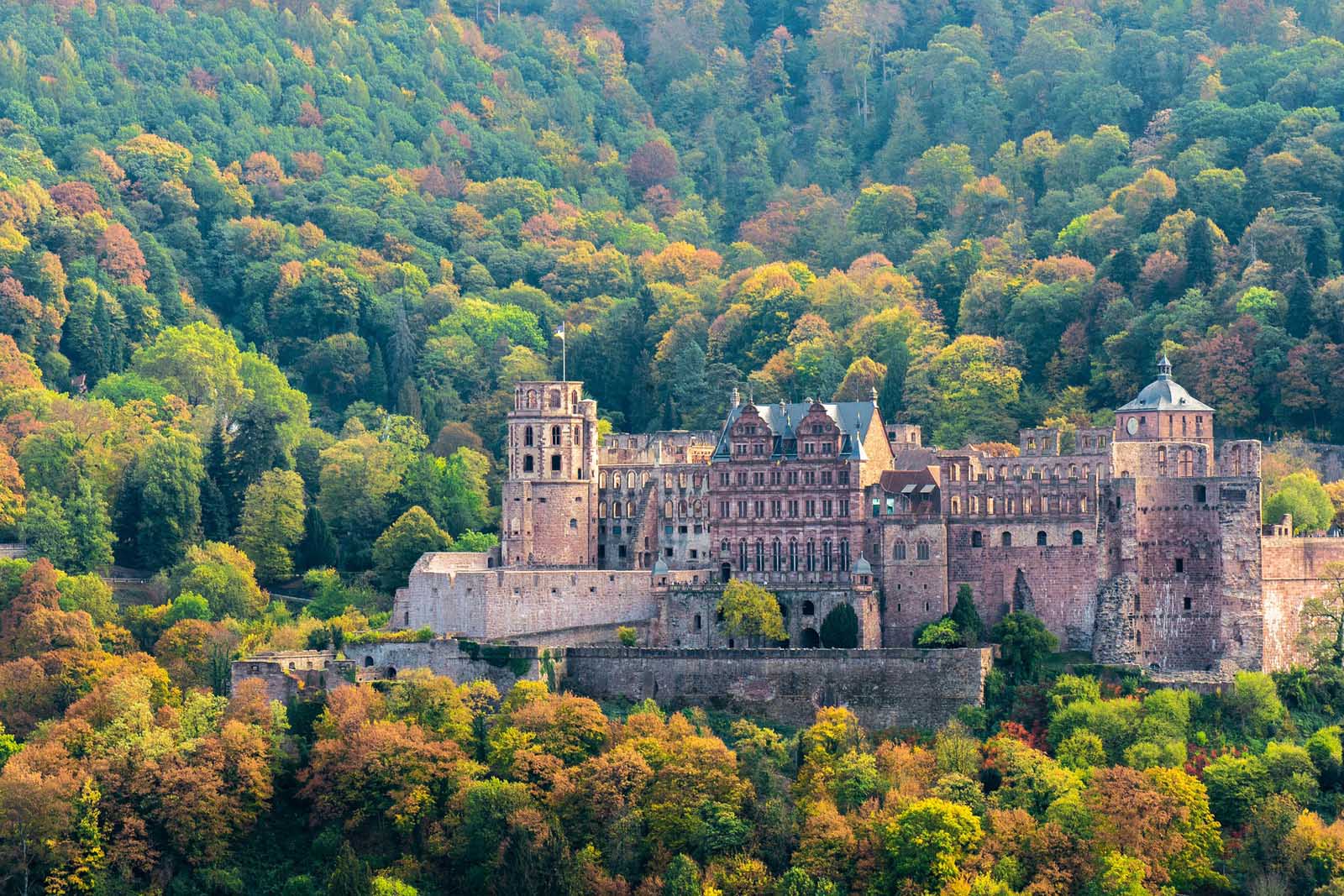
Small town charm and history collide in Heidelberg. Although quiet and reserved, you won’t be bored in Heidelberg as you jump between historical attractions and enjoy the local food scene.
Within Heidelberg Alstadt, you’ll come across the town’s palace built back in the 13th century. Now laying in ruin, its captivating “silhouette” stands out wherever you wander in the historic district.
After admiring the palace which found fame in Germany’s era of Romanticism, wander along the Philosopher’s Walk for serene views along the Neckar River. For dinner, find a table at Schnitzelbank for the best schnitzel in Germany.
14. Regensburg
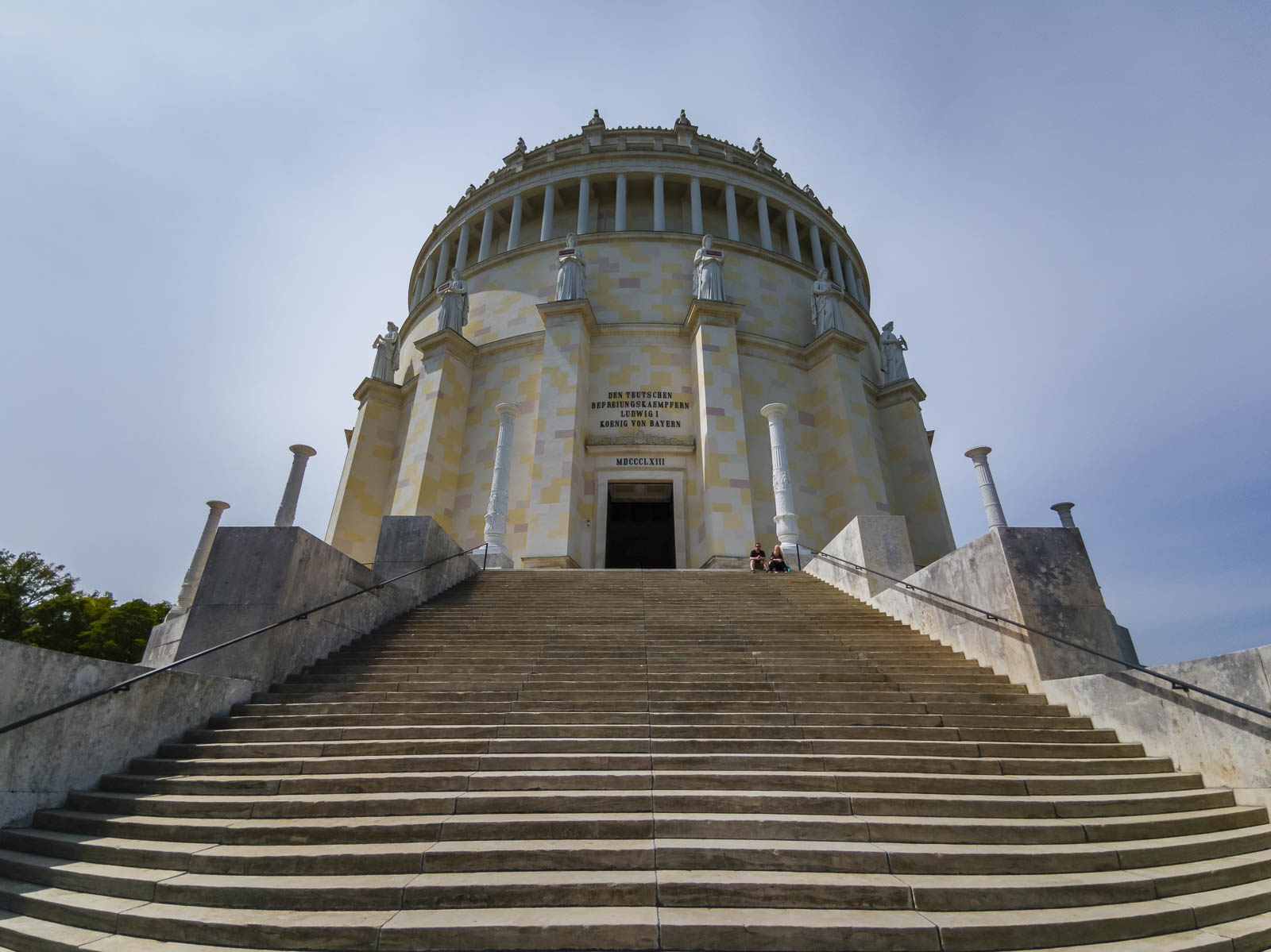
Ninety minutes north of Munich, the Bavarian city of Regensburg is another captivating example of medieval design. It may surprise some that Regensburg was the original Bavarian capital and was established long before Munich.
Along the edge of the Danube River, Regensberg is home to ruins of the Roman Empire and a breathtaking gothic cathedral. The latter dates back to 700 AD. From the cathedral, wander over to St. Emmeram’s Basilica surrounded by an atmospheric square with cozy cafes and markets. Other highlights include the beautiful City Hall and the stone bridge, one of the oldest in Germany.
15. Dresden
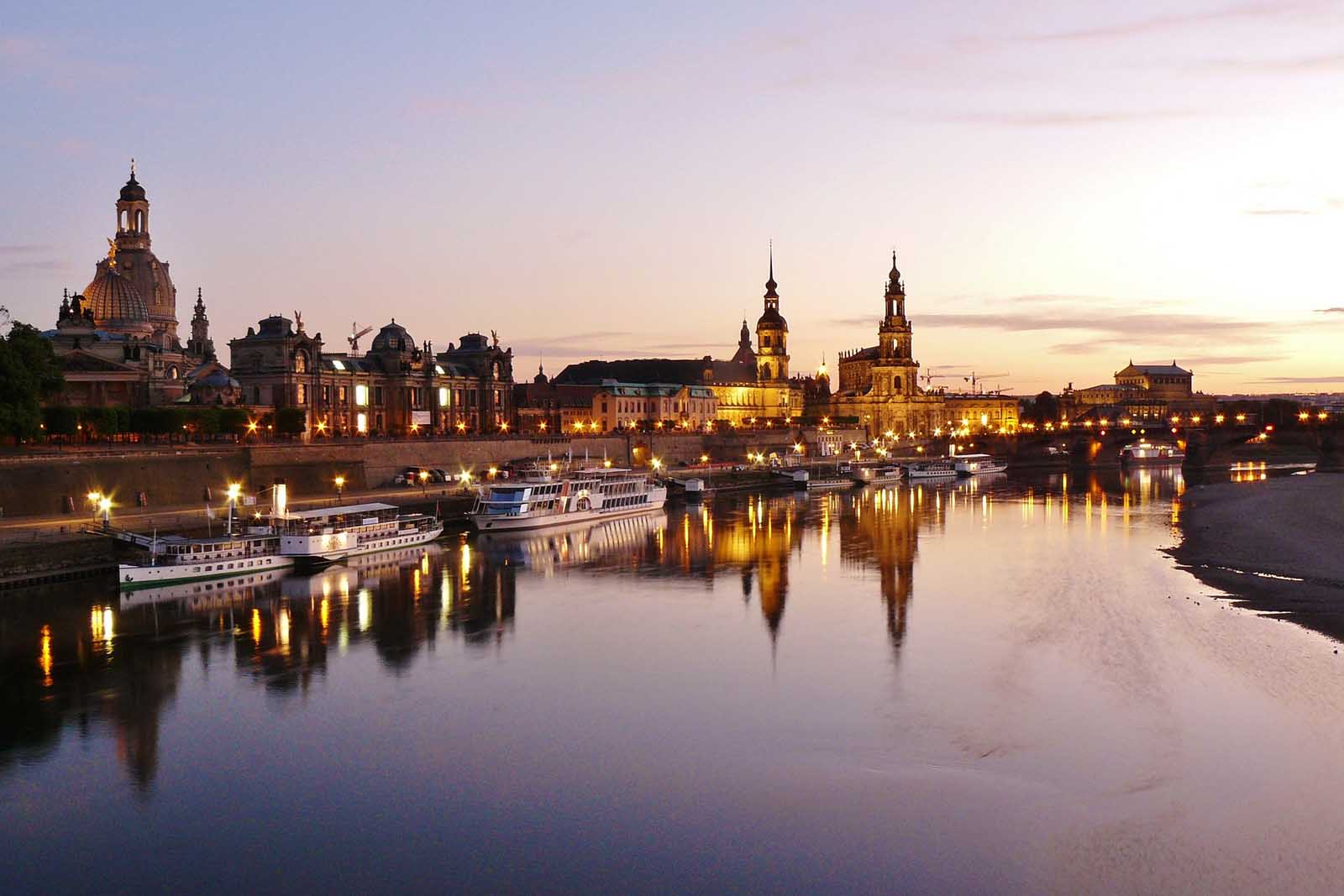
In east Germany, near the border of the Czech Republic, Dresden is both old and new. During the Second World War, much of the city suffered severe damage. Thankfully, in the years after, many of the historic structures were able to be restored. The city now has an ancient look with a youthful vibe.
The old facades and edifices now bewitch as they did for centuries, allowing new visitors the chance to admire some of the best architecture in the nation. Highlights of your time here will be the Baroque palace of Dresden Zwinger and the Renaissance Schlösserland Sachsen. The latter of which is home to the biggest porcelain mural on earth, the Furstenzug.
For modern masterpieces wander the neighborhood of Kunsthofpassage, with quirky designs home to trendy restaurants and dimly lit cocktail bars.
16. Bonn
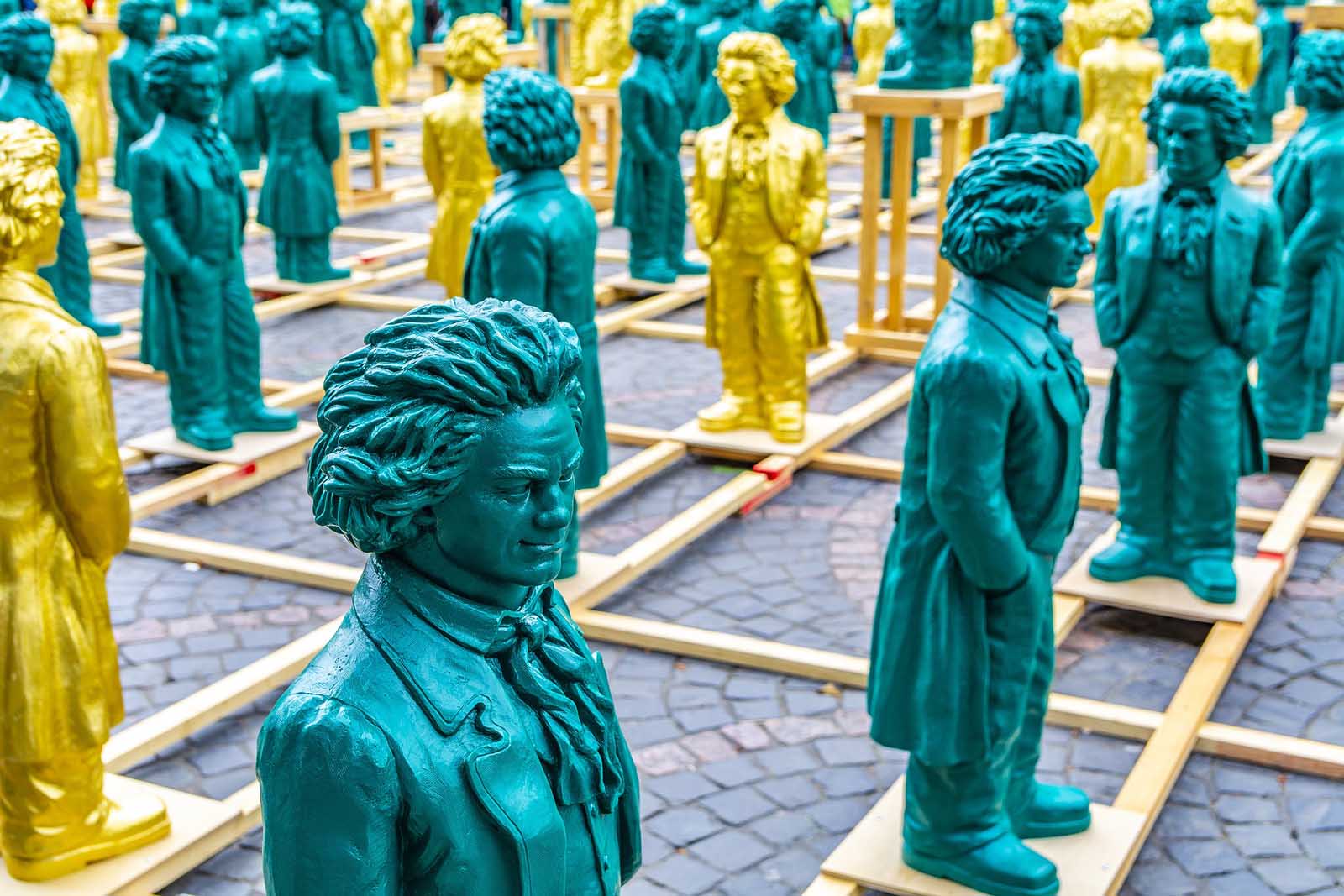
The birthplace of Beethoven, Bonn, has been attracting audiophiles for decades. In West Germany, Bonn was once the capital of the nation before rising back to prominence with the help of one iconic composer. Harboring a picturesque location along the Rhine, Bonn is a beacon of German culture. Visitors will have a sweeping range of delightful museums and galleries to experience both history and high art.
The Romanesque church, Bonner Munster, will draw the eye in with its five towering spires. Alongside the cathedral is Munsterplatz, a large town square and the center of local life. But no time here would be complete without celebrating Ludwig van Beethoven. See his statue in the town square before visiting his childhood home, now an exceptional museum.
17. Fussen
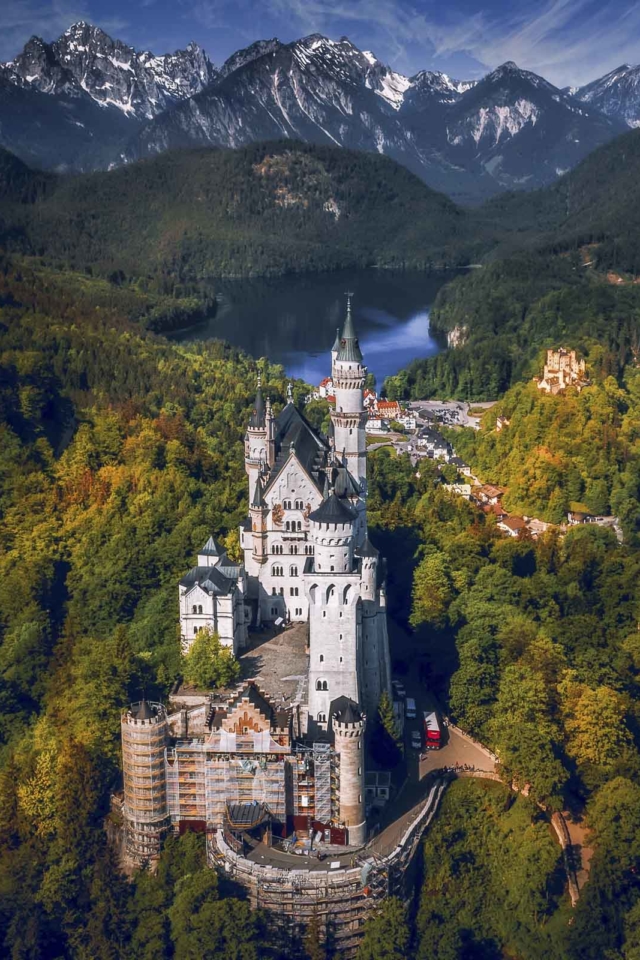
Most travelers have Fussen on their itinerary without even knowing it. Though not one of the largest cities on the list, the town is actually home to one of the most visited castles in all of Europe, Neuschwanstein Castle. But there is much to explore here, at least before and after you visit the iconic castle.
Fussen has a strong connection to the monastic order of St. Benedict, including a Benedictine Abbey. Parts of the wall that once bordered the medieval town remain to this day, and the cobblestone boulevards showcase rows of beautiful gothic houses.
The pedestrianized streets make it a breeze to walk around this charming town. But to rest your legs, head up to funicular for amazing views of Fussen and also Linderhof Palace. Afterward, visit the spectacular Neuschwanstein. The castle that inspired the home of Sleeping Beauty.
18. Mainz
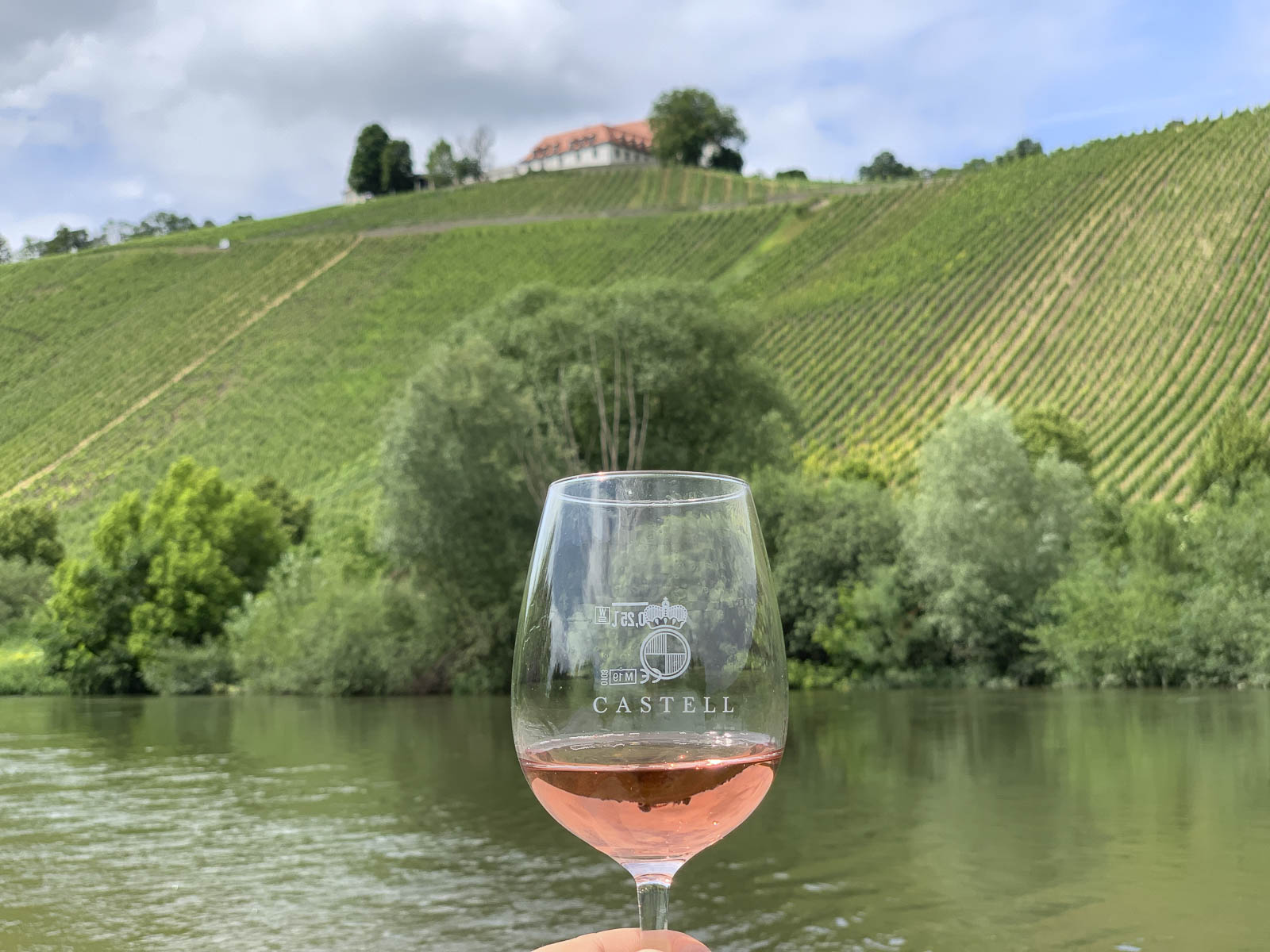
The Rheinhessen, Germany’s top wine-producing region, shares many similarities with other famed wine-growing regions like Bordeaux and Porto. A fact that should eliminate any doubt of finding a delightful bottle.
At the center of the region is Mainz, Germany’s wine capital. Split your time between exploring the many gorgeous vineyards that envelope Mainz and the Old Town. For its within the historic district that you’ll find the classic wine taverns of yore, serving authentic riesling and silvaner.
After getting your wine fix, wander about town making your way to the Markt and Kirschgarten town squares. From here, you can indulge in people watching and admire one of the most charming cities in Germany.
19. Hannover
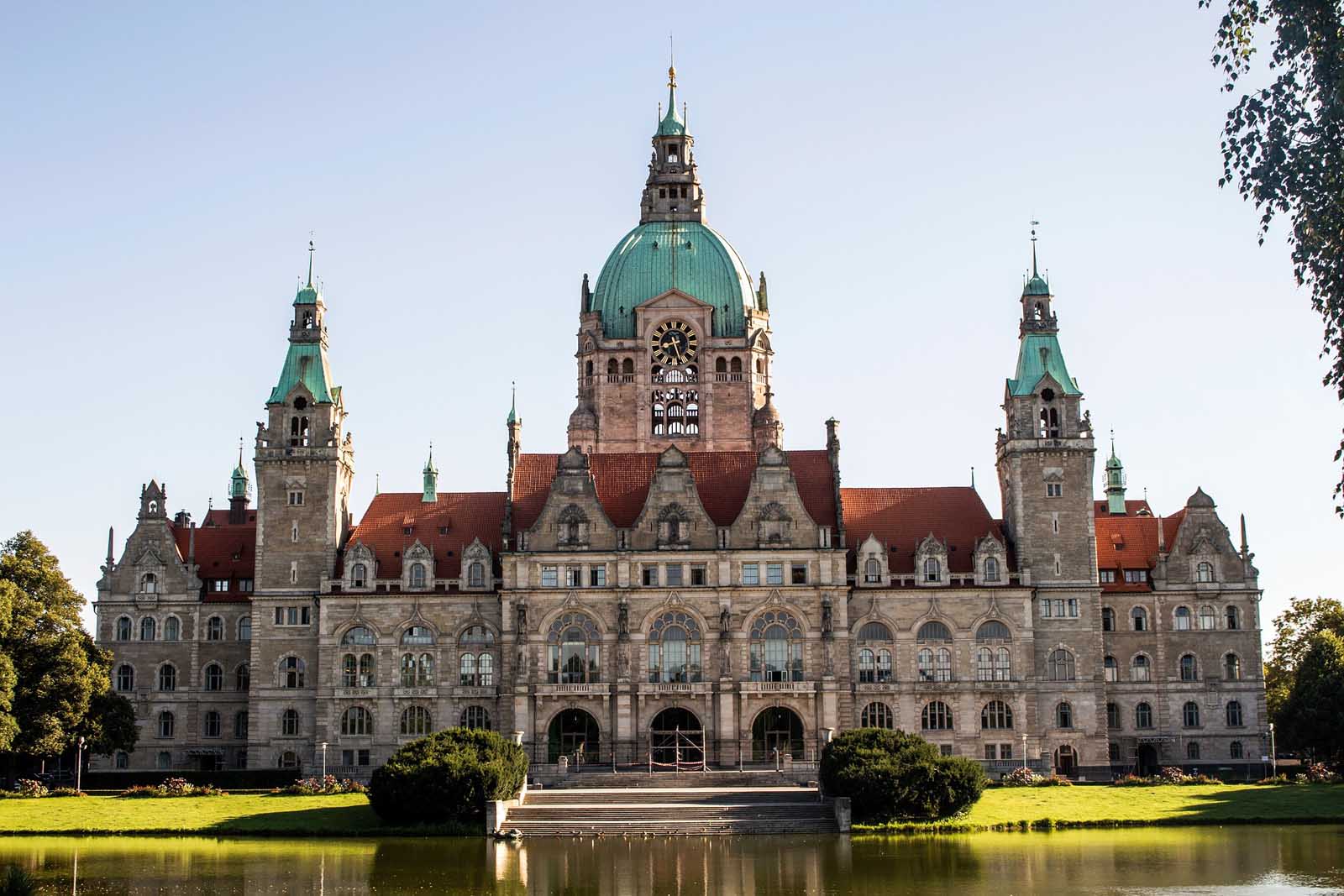
The leafy town of Hannover comes to life in the spring. On the River Leine, the city’s plethora of parks and gardens feature endless blooms of flowers creating an alluring landscape.
One of the best examples is the Herrenhausen Gardens. The tantalizing royal gardens are a mix of manicured grounds that date back to the 17th century. With the Great Garden believed to be one of the best examples of a Baroque estate in Germany.
But Hannover is more than springtime in the park. In the Alstadt, you’ll be surrounded by historic buildings and important squares. It’s here you can experience the birthplace of Hannover and its development through the ages.
20. Potsdam
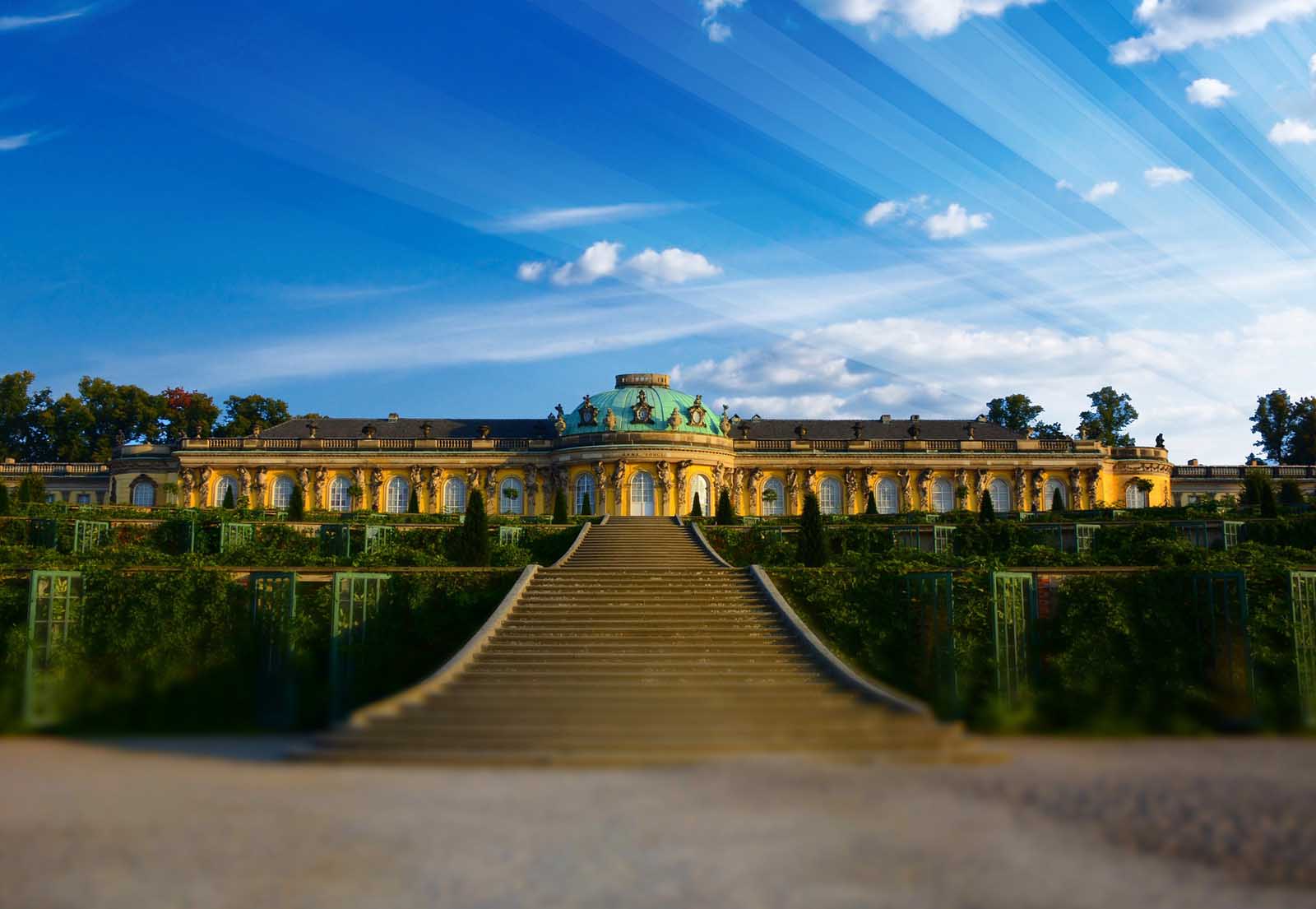
40 minutes southwest of Berlin, Potsdam can easily be visited on the train. But we think there are plenty of reasons to stick around, from UNESCO World Heritage Sites to Germany’s own version of Versailles.
Potsdam was at one stage, bordered by city walls. Today, only three of the five gates remain and are spread around the city. If you only see one, visit the Brandenburger Tor, a sightly triumphal arch.
From there, head to Sanssouci Palace. Built in the 1740s, the palace has drawn comparisons to Versailles as it’s a fellow royal retreat. Soaked in grandeur, the palace is an insightful look into Germany’s royal past. Lastly, Potsdam is home to the elegant Sanssouci Park. The UNESCO site is home to multiple palaces, lush green gardens, ancient Roman baths, and temples.
21. Trier
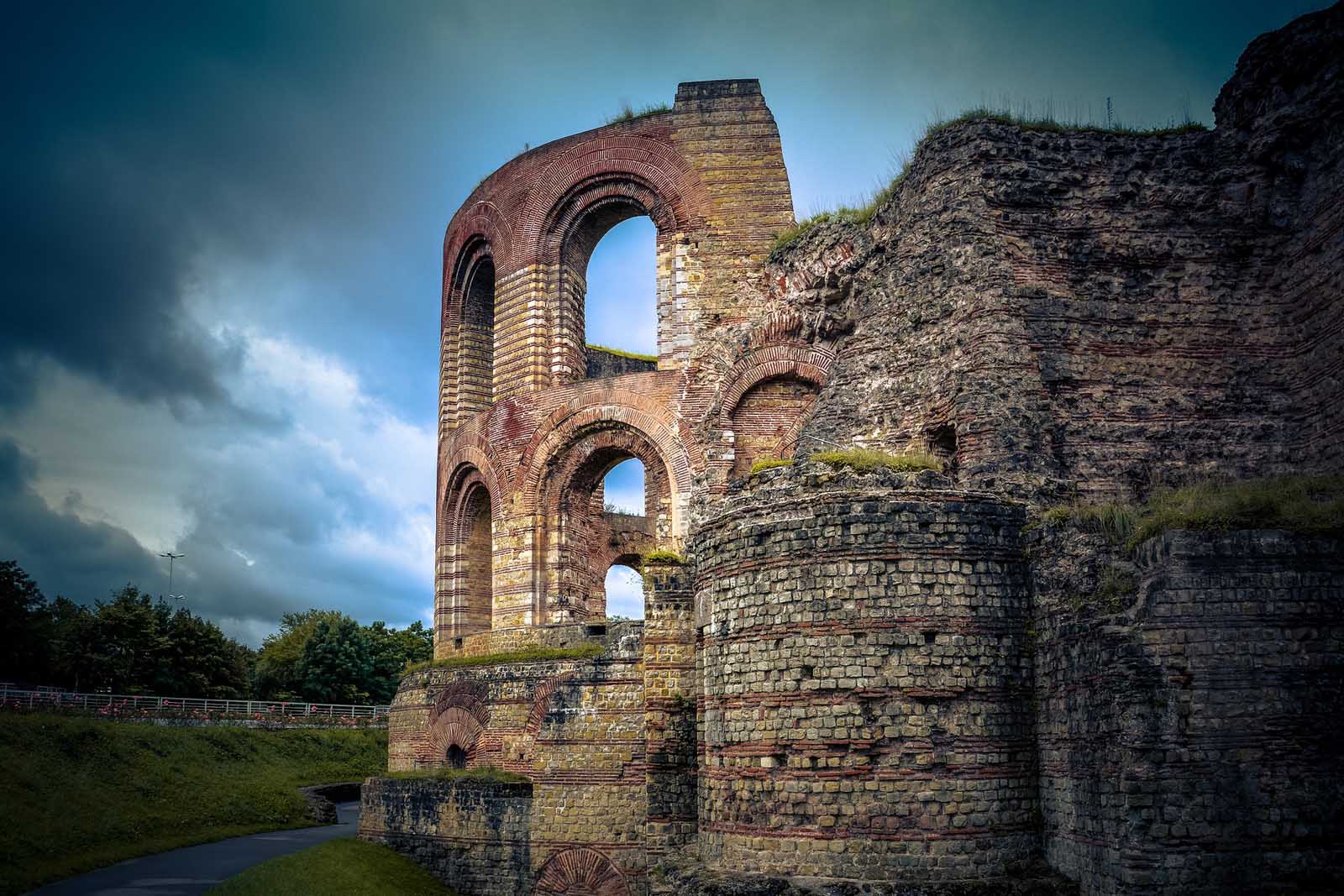
The honor of the oldest city in Germany goes to our final city. Trier was founded in 16 BC as part of the Roman Empire. For this reason alone, it’s one of the top cities in Germany for history buffs.
The Romans may have come and gone, but the beauty of Trier remains. So too, do the ruins, a poignant reminder from 2000 years ago. Highlights include Porta Nigra, the well-preserved gate from medieval times, and the Imperial Baths.
Over the ensuing centuries, St. Peter’s Cathedral, the oldest in Germany, was added along with the Basilica of Constantine. Trier has also developed into a foodie haven, with markets at Hauptmarkt Square and amazing wines from the surrounding regions.
This is just a sampling of the most popular cities in Germany. There is a lot more to discover in this vast country. Whether you are into old-world history, interesting culture, or looking for a more futuristic vibe, Germany has you covered.

